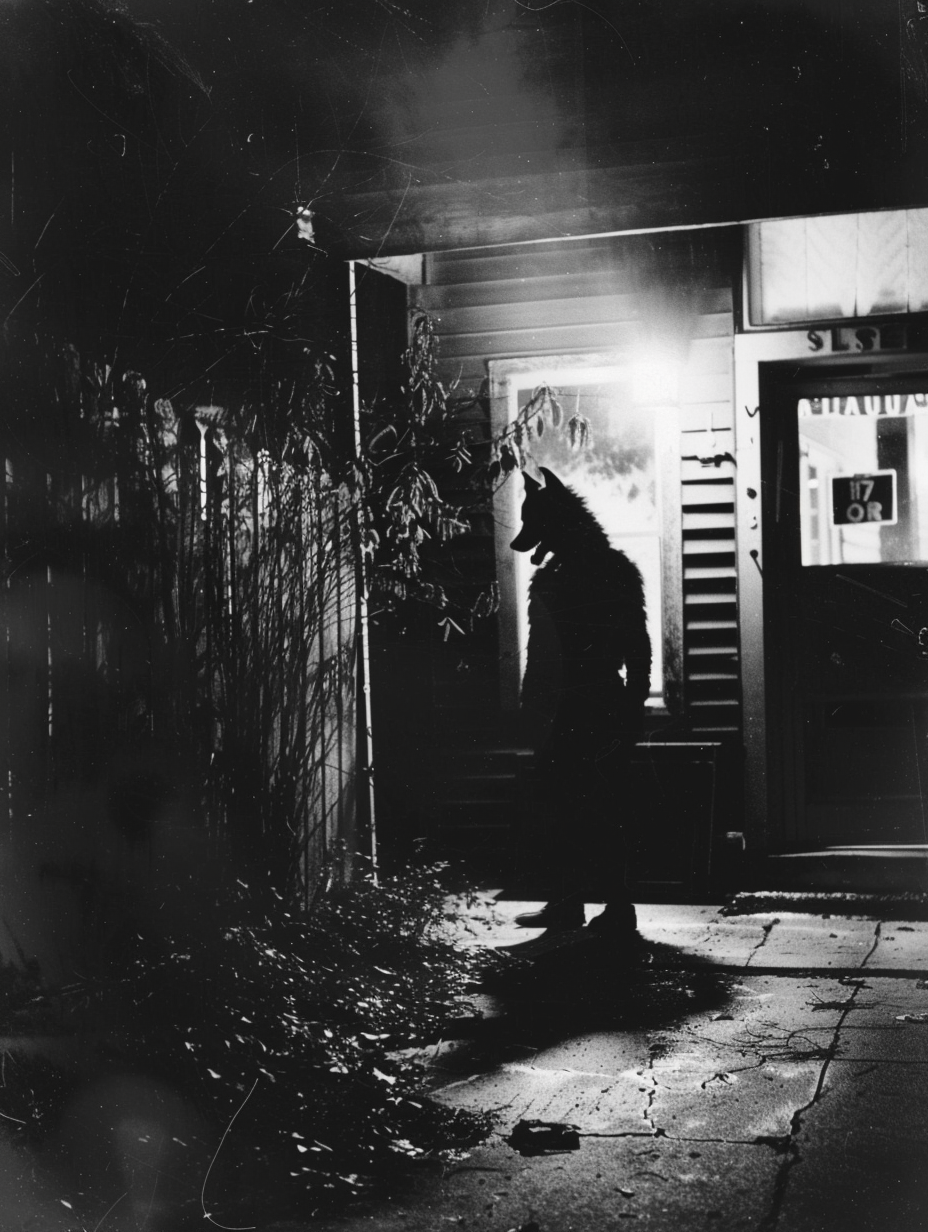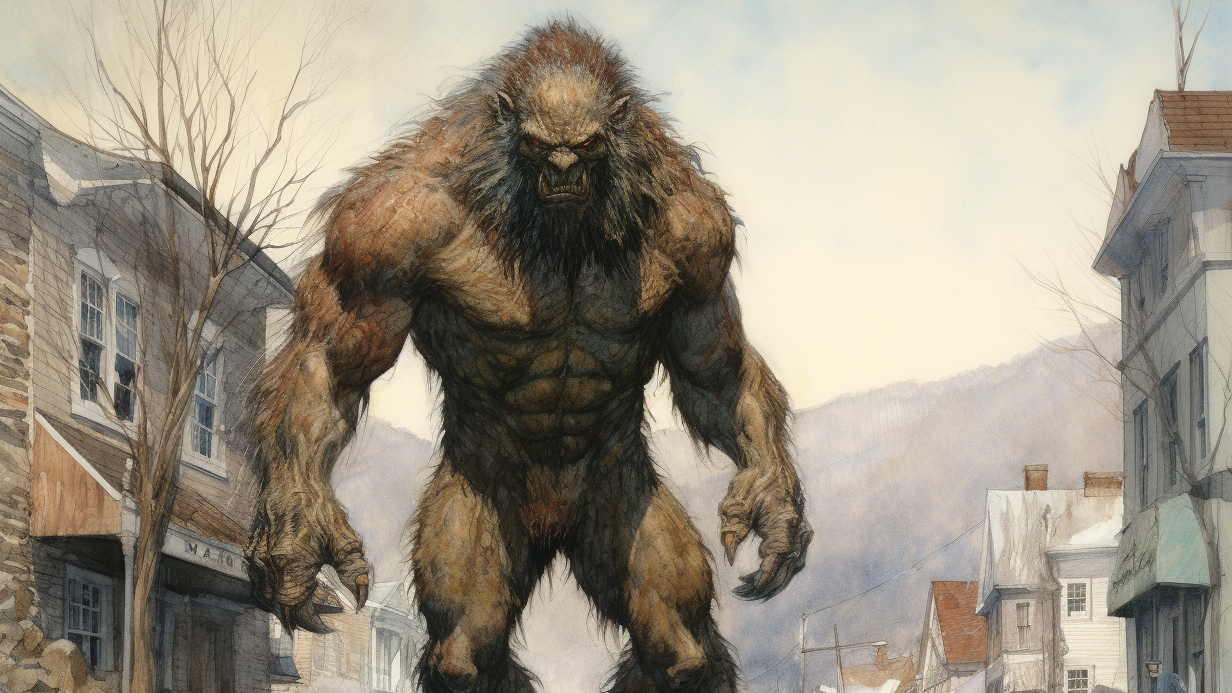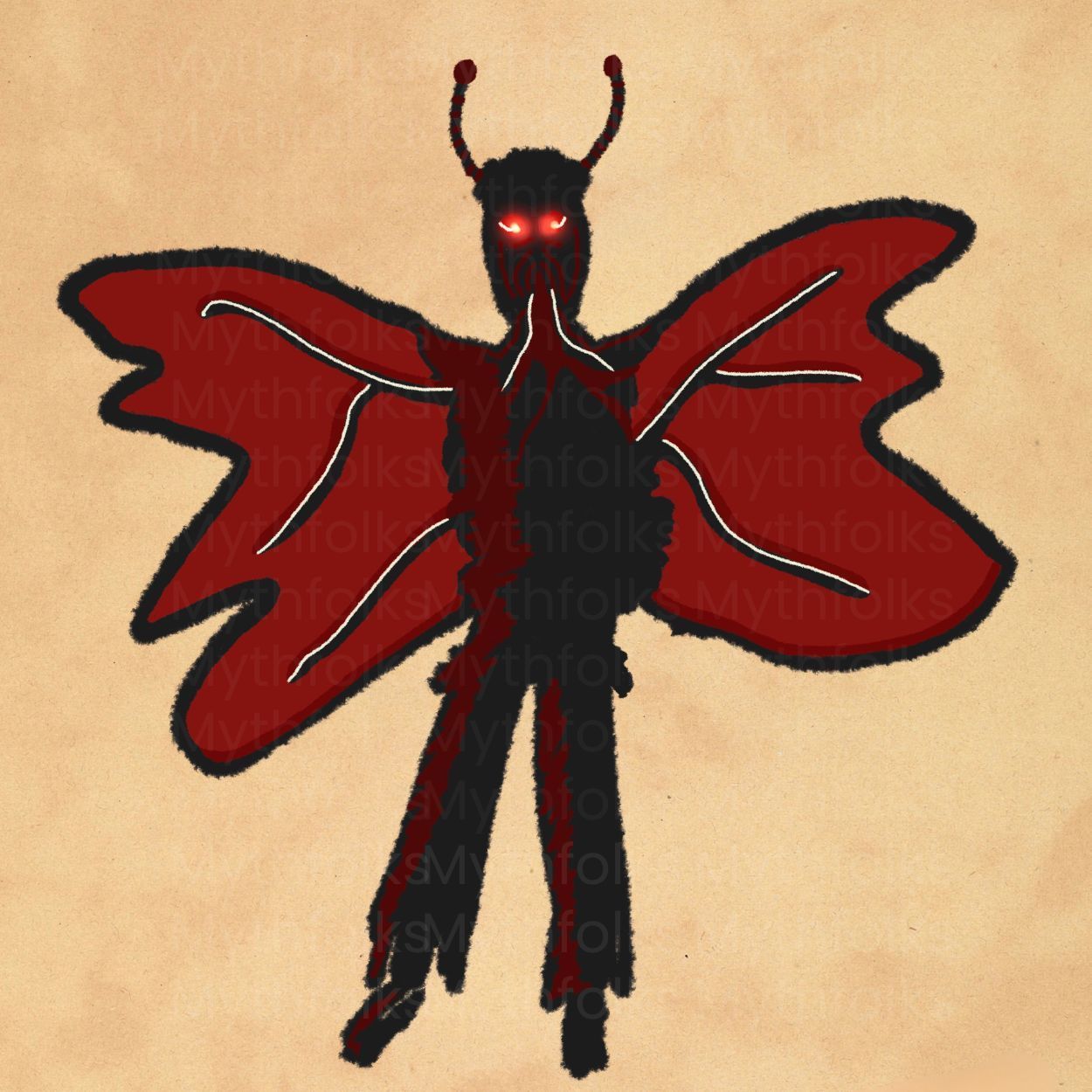Wendigo, Wiindigo, Wiitiko - the cannibal cryptid born of starvation and fear
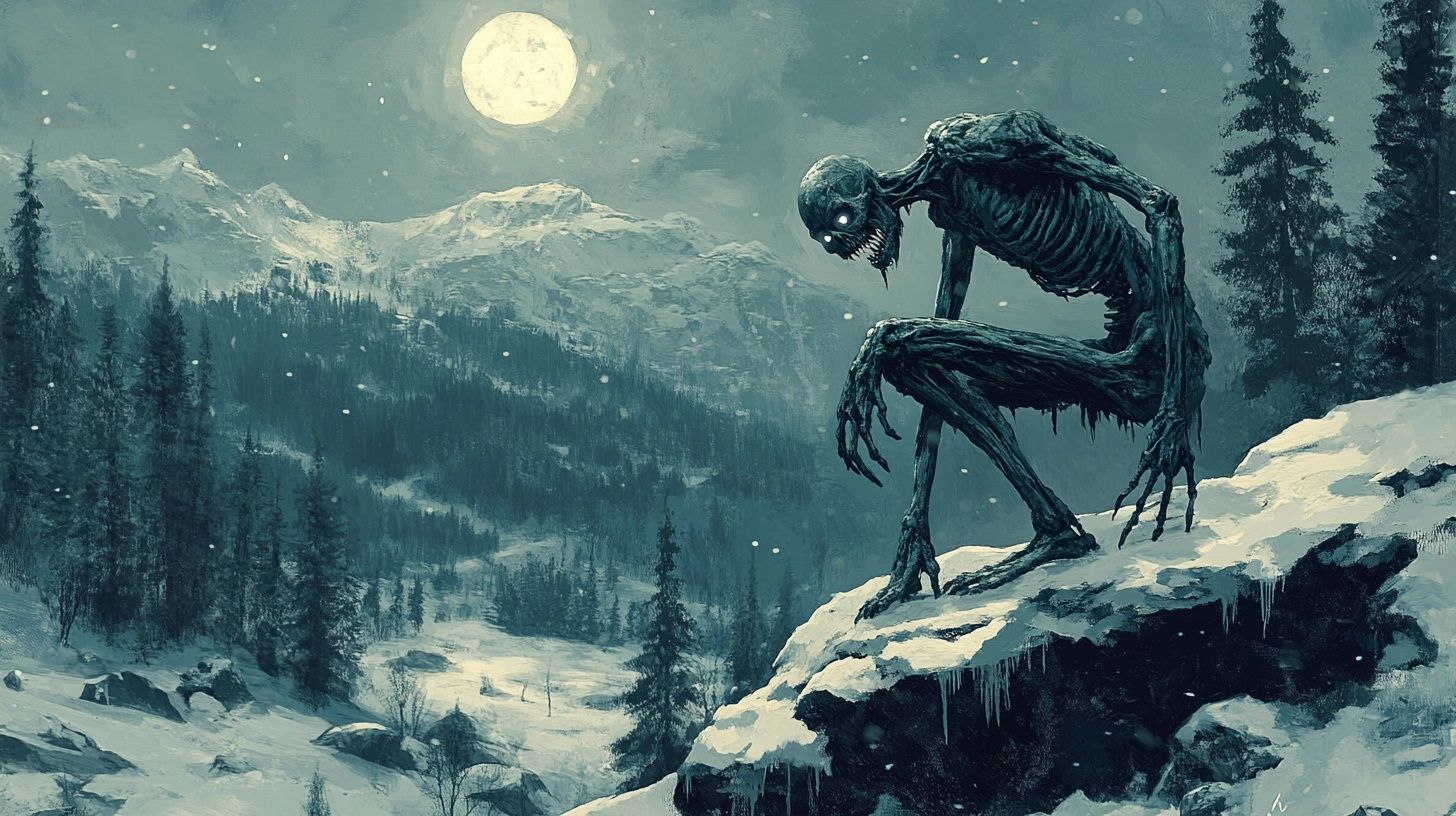
The Wendigo is a humanoid cryptid and one of the creepiest figures in North American folklore.
It’s often described as a being created through acts of cannibalism or extreme greed, transforming a person into something inhuman and stories of the Wendigo are deeply tied to survival, hunger and the harsh conditions of the subarctic environment.
While modern media often portrays the Wendigo as a generic monster, its origins are rooted in Indigenous teachings about the dangers of imbalance and excess.
Here’s everything you need to know about this deeply unsettling monster.
Published: 9th Feb 2025
Author: Mythfolks
Key facts at a glance:
Mythology:
Algonquin-speaking Indigenous peoples (Anishinaabe, Cree, Ojibwe)
Regions associated:
Subarctic Canada (Alberta, Manitoba, Ontario), northern United States (Minnesota, Wisconsin, Michigan)
Folklore type:
Legends, Cautionary Tales
Creature type:
Cryptid, Human Transformation/Spirit, Cannibal
Also called:
Wiindigo, Wiitiko, Wetiko, Wiindigog
First recorded reference:
Indigenous oral traditions predating European contact, documented by European settlers in the 17th century
Distinctive feature:
Insatiable hunger for human flesh, heart made of ice
Witnesses:
Numerous oral accounts in Indigenous traditions; infamous Swift Runner case, 1879
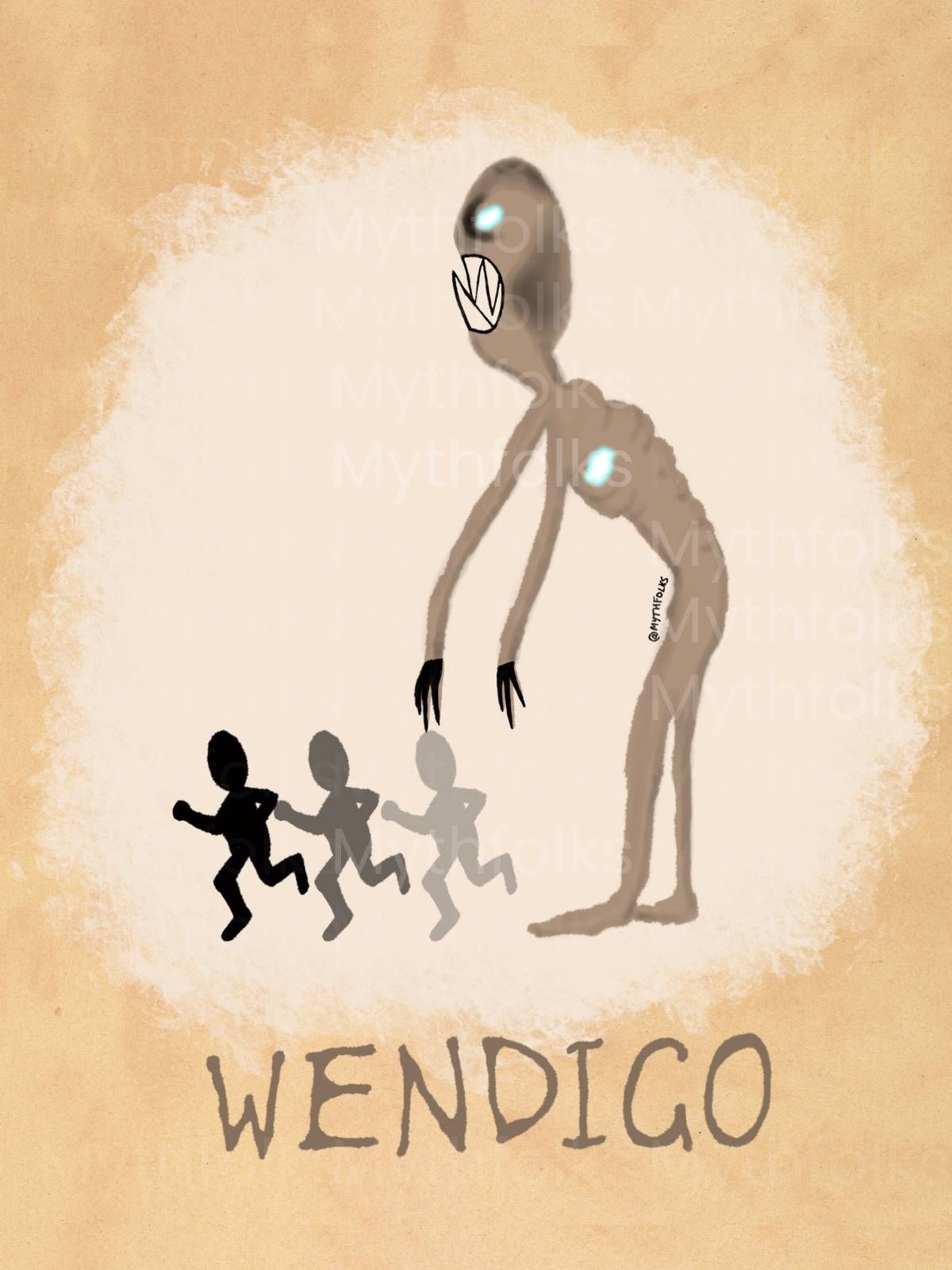
Origins of the Wendigo
The creature originates from the folklore of the Anishinaabe, Cree and other Algonquin-speaking Indigenous peoples of North America.
Wendigo stories are most prominent in the subarctic regions of Canada, including areas like Alberta, Manitoba and Ontario, as well as parts of the northern United States, such as Minnesota, Wisconsin and Michigan.
These regions are known for their harsh winters, where survival often relied on cooperation and resource-sharing to avoid famine and isolation.
The name “Wendigo” has multiple spellings and variations depending on the region and language, including Wiindigoo (Anishinaabe), Wetiko (Cree) and Wiitiko (Ojibwe).
Though the details of its description and behavior vary, the core of the legend remains consistent: it’s a creature born out of acts of cannibalism, greed or imbalance in nature.
In some stories, the Wendigo isn’t a separate creature but a human transformed into one through extreme hunger or moral corruption.
The Wendigo's influence extends beyond Indigenous communities. Early European settlers who encountered the tales adopted them into their own folklore, though often distorting the original meaning.
Over time, the Wendigo became associated with wilderness horror, isolation and the unknown dangers of the natural world.
Despite these adaptations, the legend’s roots in Anishinaabe and Cree cultures remain a critical part of its identity, connecting the creature to its role as both a cautionary figure and a reflection of survival in extreme conditions.
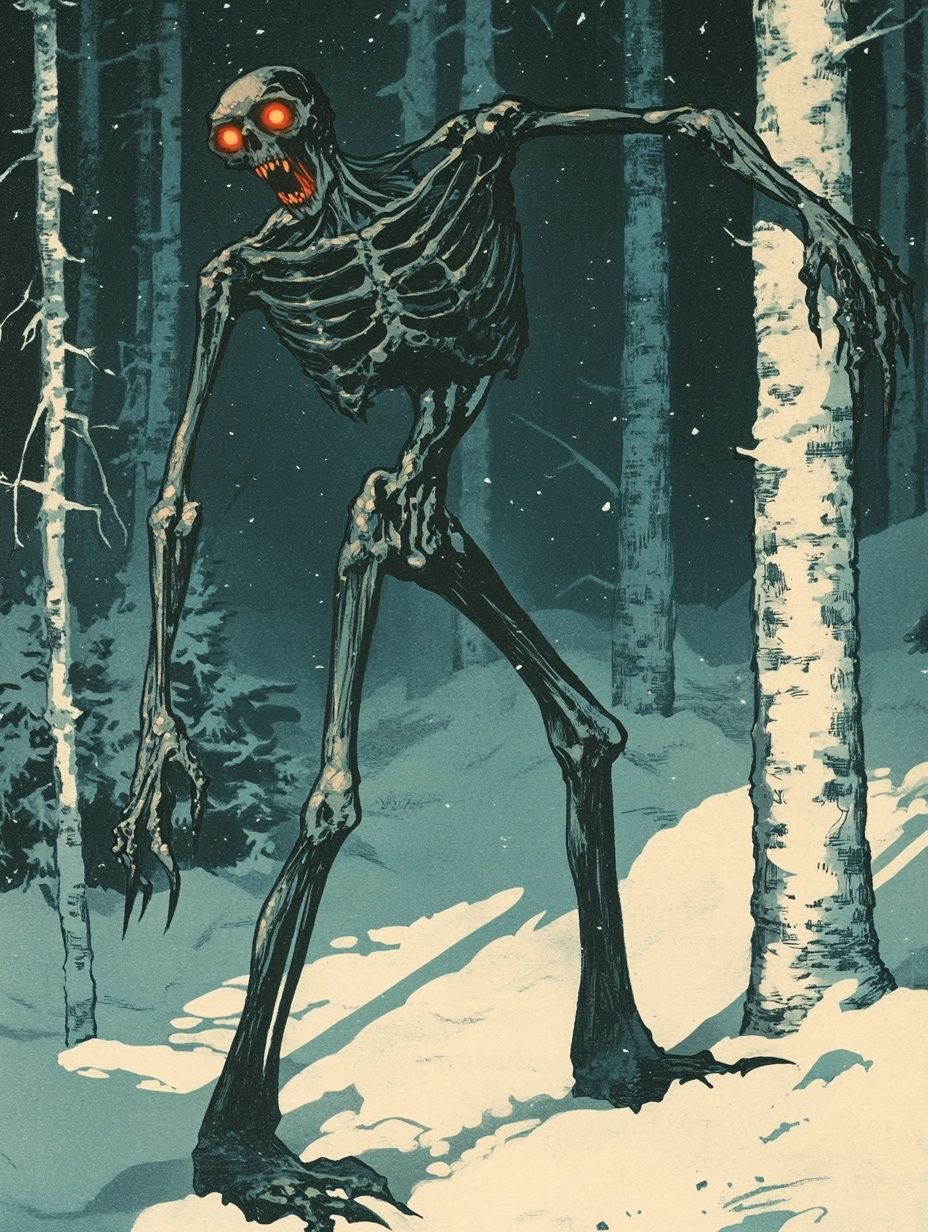
What does the Wendigo look like?
The Wendigo is often described as skeletal and gaunt, with its skin pulled tightly over its bones. Its hollow eyes, sharp teeth and clawed hands make it unmistakably inhuman.
In some stories, it’s said to have a heart made of ice, symbolizing its cold and relentless hunger. While early descriptions depicted it as more human-like, modern interpretations have added features like antlers, which weren’t part of the original legend.
What is Wendigo psychosis?
Many legends say a Wendigo isn’t born but created through acts of shamanism and sorcery, turning humans into cannibals and overtaking someone completely. Once transformed, a person loses their humanity and becomes a creature driven only by hunger.
The idea of transformation is central to the Wendigo’s terror. In times of starvation or isolation, anyone could fall victim to desperation and cross the line into monstrosity.
This fear is so powerful that some anthropologists coined the term "Wendigo psychosis" to describe a very real, human psychological condition where people, especially in extreme hunger, develop an urge to consume human flesh.
While the concept is debated, it reflects the very real anxieties faced by communities living on the brink of survival.
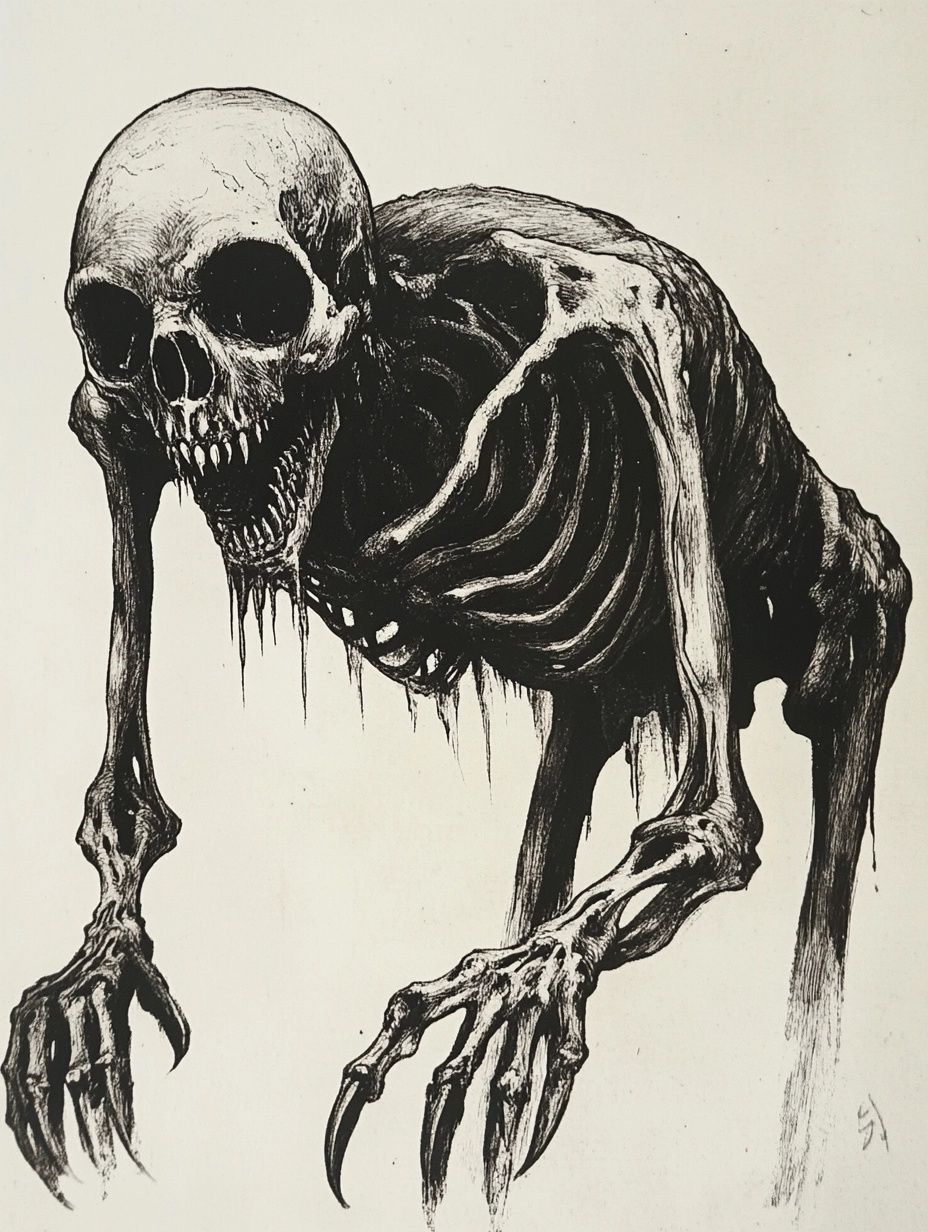
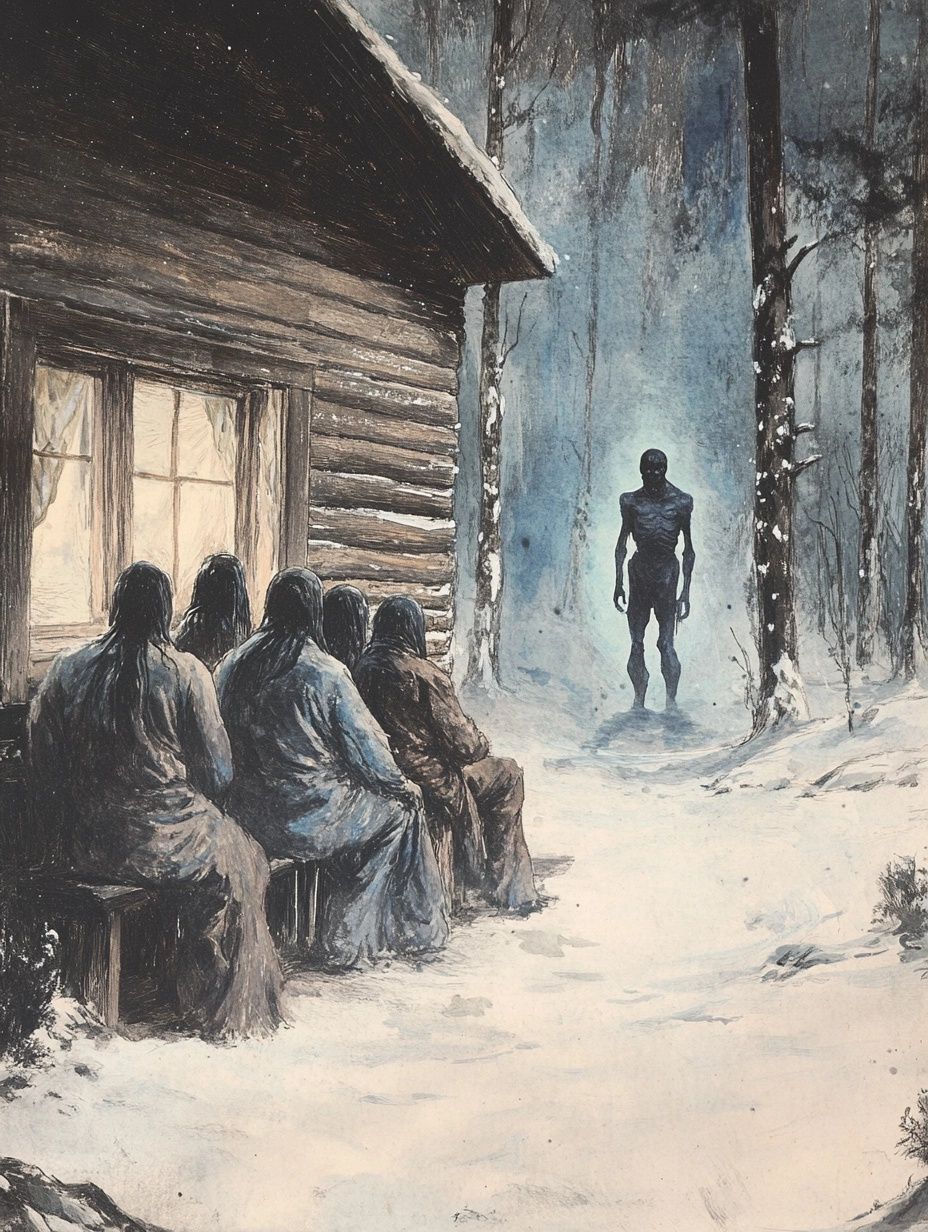
Wendigo stories and sightings
Stories passed down said that the Wendigo made its presence known through high-pitched screams in the forest and the screams would echo through the trees, heightening the tension for those who knew the creature might be near.
In addition to its ability to instil dread in the locals, the Wendigo was known to taunt its prey. Stories describe the creature stalking trappers or hunters for days, playing a game of hide-and-seek, throwing objects, or creating unsettling noises to exhaust and disorient its victims.
Then it would make its move, running through forests with such force that it would shake or break trees in its path.
But native Elder stories also shared that the Wendigo was not seen as invincible. Some tales recount people using clever tactics to avoid or escape it.
For example, it was said that the Wendigo couldn’t swim and those who found themselves pursued would use this to their advantage, escaping across lakes or rivers where the creature couldn’t follow.
Others describe attacking it directly, using boiling lard or targeting its heart of ice. However, as shared by an Elder, defeating the Wendigo requires knowledge of its type and the circumstances of its creation; otherwise, it may return again and again as an enduring threat.
One unique Wendigo-related story comes from Poplar River in the 1930s. During a strong windstorm, the local community believed a Wendigo was approaching from the southeast.
In response, everyone gathered in a single dwelling while shamans worked to alter the Wendigo’s path.
Though the exact outcome in this case wasn’t shared, it’s a good illustration of the community’s emphasis on protecting one another and maintaining balance in their isolated, resource-scarce environment.
In a less positive tale, another infamous real-world case is that of Swift Runner, a Cree man who, during the winter of 1879, killed and ate his family despite being within reach of a trading post.
Swift Runner claimed to have been possessed by a Wendigo spirit, which drove him to commit the horrific acts.
He was convicted and executed, with his case standing as one of the most well-documented intersections between Wendigo folklore and reality.
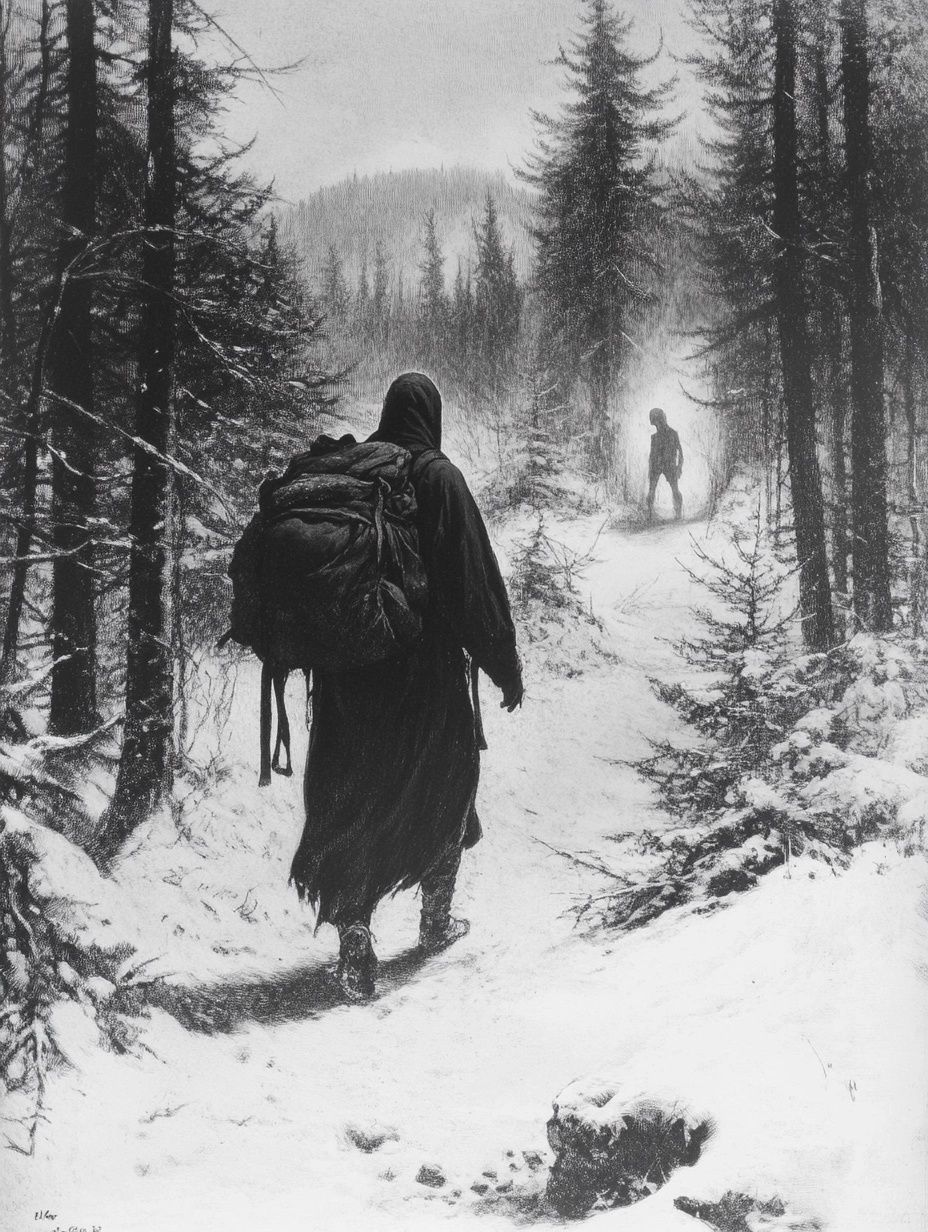
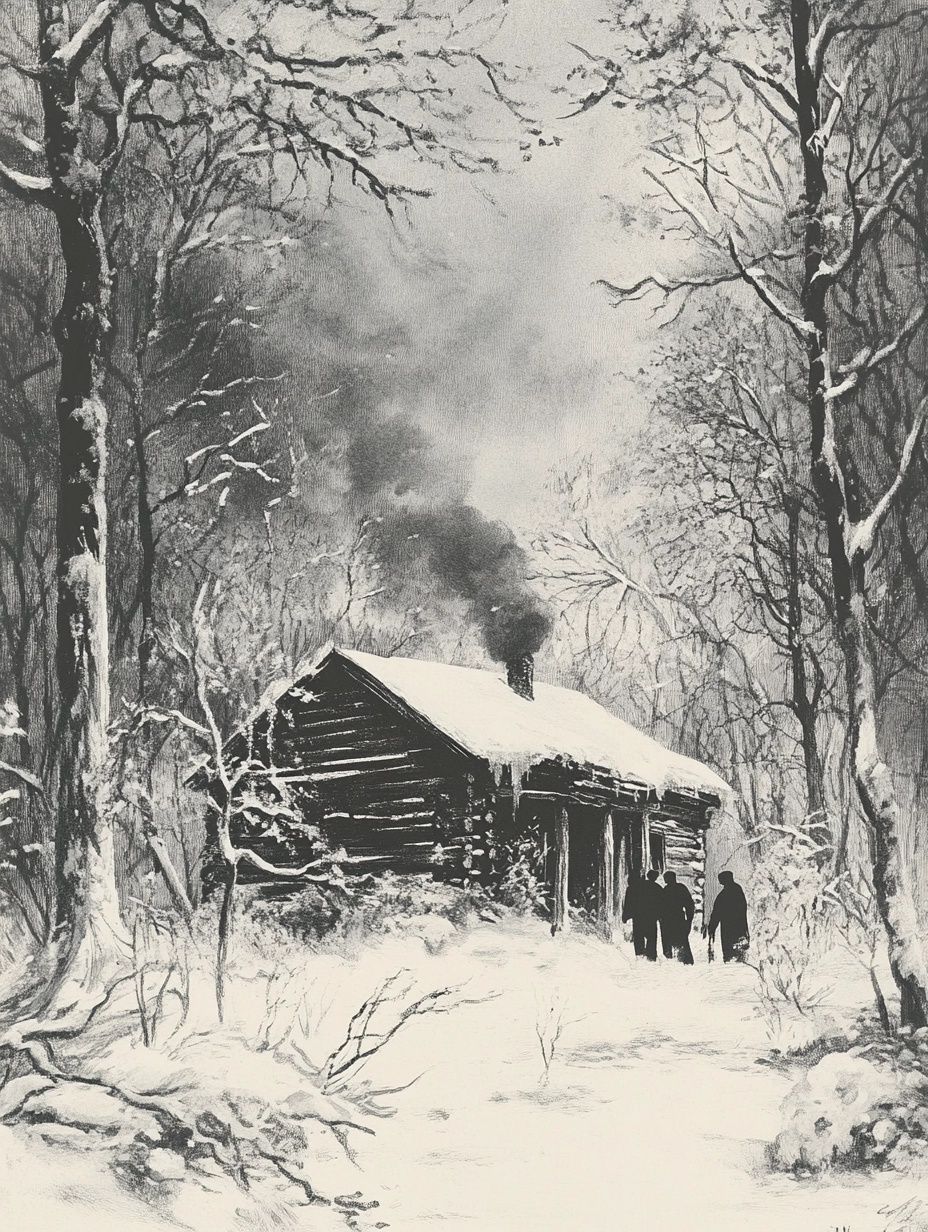
The Wendigo in pop culture
The Wendigo has become a prominent figure in modern media, evolving far beyond its original cultural context. Horror films, novels and TV shows have reimagined the creature, often adapting it to suit Western storytelling tropes.
Its presence in stories like Pet Sematary by Stephen King, the TV series Supernatural and the Hannibal TV adaptation highlights its enduring appeal as a symbol of terror and isolation.
One of the most significant changes in the Wendigo’s depiction is its appearance. As I discussed above, traditional descriptions portrayed the creature as gaunt, skeletal and human-like, with glowing eyes and icy features.
However, many modern interpretations add elements like antlers or animalistic traits, transforming it into a more visually dramatic hybrid of man and beast. This evolution caters to horror audiences who expect more monstrous imagery, but it often departs from the creature's original representation in Indigenous stories.
The Wendigo also serves as a powerful metaphor in popular culture. Its hunger and transformation are frequently used to symbolize themes of isolation, moral decay and the fragility of civilization. In horror narratives, the Wendigo often represents the fear of losing control - whether through madness, desperation, or external forces.
For example, in Hannibal, the Wendigo is depicted as a psychological projection of guilt and darkness, while in Pet Sematary, its connection to death and corruption amplifies the story’s sense of dread.
Despite these changes, the Wendigo remains a compelling figure. Its adaptability to various genres and themes ensures its continued presence in storytelling, but it’s worth remembering the deeper cultural roots of this legend as it evolves in the modern imagination.
Lessons from the stories of the Wendigo
Wendigo stories carry deep meaning for the communities that tell them. They reflect the challenges of living in unforgiving environments, where survival depended on cooperation and restraint.
Greed, selfishness, or taking more than your share weren’t just moral failings- they could threaten the survival of everyone. These stories weren’t told just to frighten people but to remind them of what was at stake.
The Wendigo also captures the fear of what people can become when pushed too far. Harsh winters, isolation, and hunger could break down even the strongest among them.
In these tales, the transformation into a Wendigo wasn’t always a punishment, it was a tragic loss, a sign of what happens when survival comes at the cost of humanity.
What makes the Wendigo so compelling is how close it feels. It’s not a distant myth or a creature that exists in another world.
The fear comes from the idea that this could happen to anyone under the wrong circumstances.
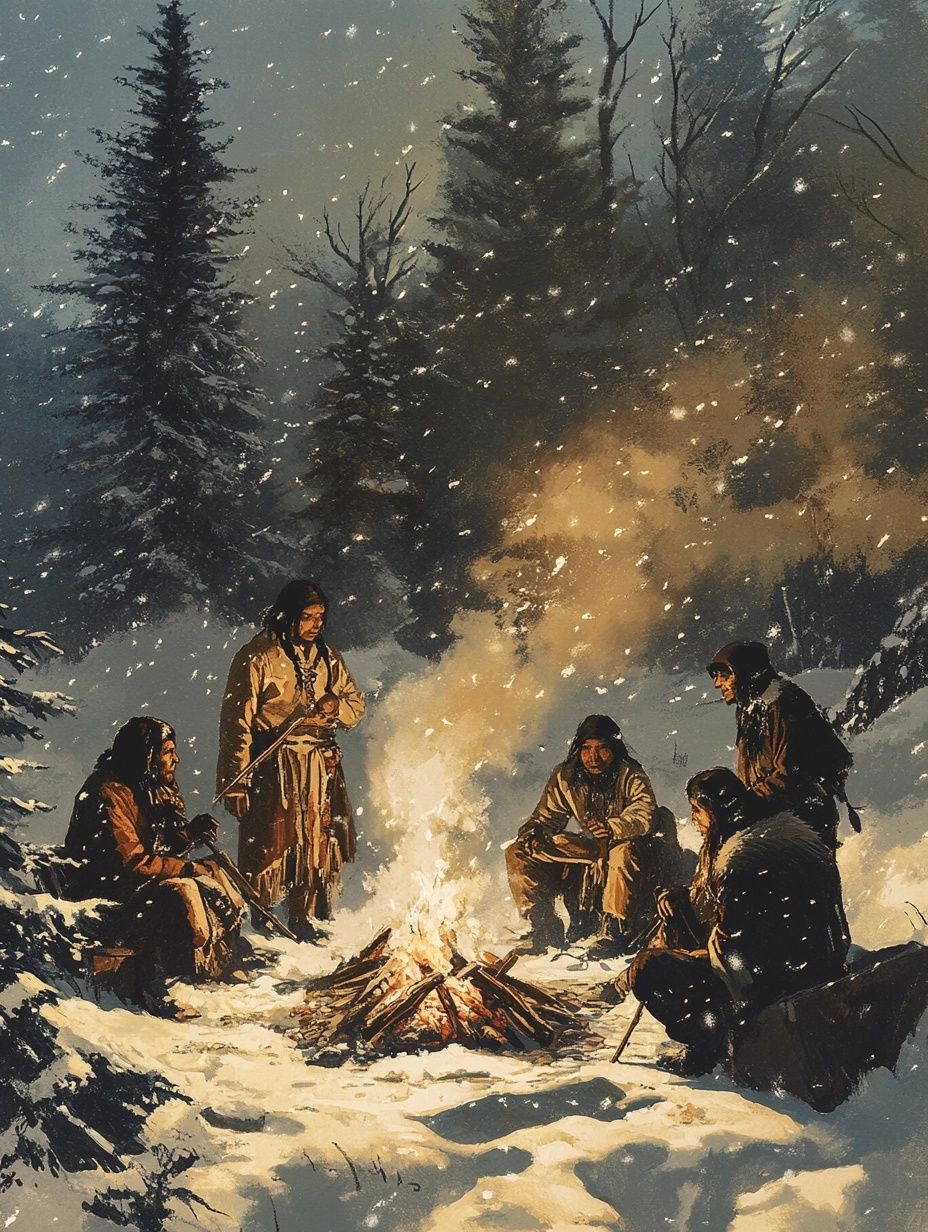
The Wendigo and its variations remain one of the most compelling cryptid stories, probably because of its deep ties to real human devastation and despair.
While many cryptid tales exist in arenas of pure legend (or full imagination), the stories of the Wendigo are grounded in the harsh realities of survival. They reflect the brutal environments their storytellers endured - subzero temperatures, scarce food and isolation.
It’s not hard to imagine how, in such dire circumstances, the human psyche could fracture, leading to desperate and unthinkable acts (check out more on Wendigo psychosis here).
History has shown us that cannibalism, though taboo, is a recognized response to extreme desperation. The infamous story of the Andes plane crash in 1972, where survivors resorted to eating the deceased to stay alive, is an awful reminder of what humans are capable of when faced with the unimaginable.
In this way, the Wendigo could be seen as a reflection of people pushed to their limits, forced into actions that strip them of their humanity.
Perhaps the Wendigo isn’t merely a spirit of legend or a monstrous cryptid stalking the frozen forests. Perhaps it exists within every person, waiting to emerge when survival becomes more important than morality.
Real or not, the Wendigo serves as a cold reminder of the fragile boundary between humanity and monstrosity.
And on that happy note, more cryptid stories below!
Article sources
- Pawłowska-Mainville, Agnieszka. "Cannibalizing the Wiindigo: The Wiindigog in Anishinaabeg and Oji-Cree Boreal Landscapes and Its Re-presentations in Popular Culture." Literatura Ludowa 66, no. 3 (2022): 51-69
- Eberhart, George M. "Mysterious creatures." (2002): 1-794.
- Fee, Christopher R., and Jeffrey B. Webb, eds. American Myths, Legends, and Tall Tales: An Encyclopedia of American Folklore [3 volumes]. Bloomsbury Publishing USA, 2016
- Lietz, Michelle. Cannibalism in Contact Narratives and the Evolution of the Wendigo. Eastern Michigan University, 2016.
Explore more cryptids



